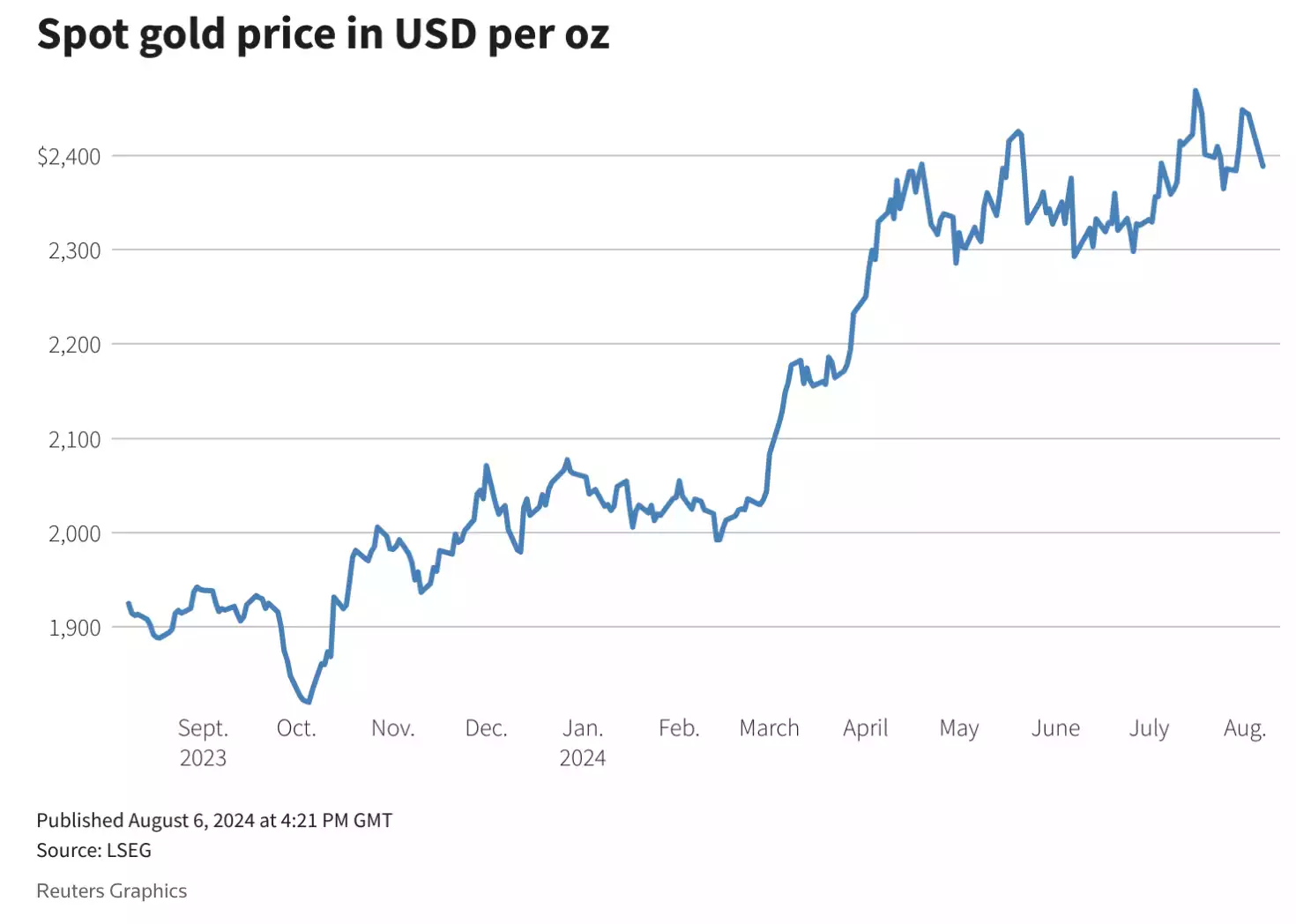Global Stock Market Chaos and How it Relates to Gold
News
|
Posted 08/08/2024
|
1689
Monday was a brutal day on Wall Street, as analysts grappled with a grim U.S. jobs report from Friday and suddenly recognised the deeper economic troubles that were always present.
As a result, the U.S. stock market experienced significant losses:
Dow Jones: -1033.99 / -2.6%
NASDAQ: -576.08 / -3.43%
S&P 500: -160.23 / -3%
Russell 2000: -70.15 / -3.33%
This selling wave wasn’t merely confined to the U.S. — it rippled across global markets, erasing approximately $6.4 trillion. For example, Japan’s Nikkei 225 Index fell by 13.2% following the recent interest rate hike. We discussed Japan’s economy and the Yen Carry Trade in more detail yesterday here.
Investor sentiment can shift rapidly. The global selloff stemmed from more than just U.S. economic worries. As Bloomberg noted in a recently released article, investors are starting to realise they have been operating under several flawed assumptions:
“One thing is clear: the pillars that had underpinned financial-market gains for years — a series of key assumptions that investors across the world were banking on — have been shaken.”
“They look, in hindsight, a bit naïve: the U.S. economy is unstoppable; artificial intelligence will quickly revolutionise business everywhere; Japan will never hike interest rates — or not enough to really matter.”
But it wasn’t just U.S. equities that plummeted this week. To the surprise of many, gold and silver suffered significant losses as well.
Gold's price dropped 3.2% at its lowest point but later rebounded to around $2,400 an ounce, closing the day down 1.3%. Silver took a harder hit, plummeting 7.2% intraday due to fears of reduced demand amid economic slowdown.
You might wonder why gold, a traditional safe haven, and a hedge against economic and political turmoil, fell during the market chaos.
But historically speaking, gold tends to sell off early in bear markets. For example, gold saw multiple 3% declines during the early pandemic selloff in 2020 and dropped over 7% in October 2008 at the start of the financial crisis.
This is because Gold often serves as a hedge, and funds and investors alike often liquidate their large gold positions to cover losses in stocks during sharp downturns. As a consequence, gold tends to fall less drastically and recovers more quickly than other asset classes.
As one analyst told Bloomberg, during significant stock market weakness, investors sell gold to meet margin calls but often buy it back once the dust settles.
“Virtually every time there is marked equities weakness, investors who hold gold as a risk hedge will liquidate part of their holdings to raise liquidity against any potential margin calls. When the dust settles, they almost invariably buy it back.”
Margin calls are a significant issue during market downturns. When account balances fall below certain thresholds, brokers require additional deposits to meet minimum levels. Gold’s liquidity makes it a quick source of cash to cover these calls.
Despite Monday’s downturn, gold recently hit a record high and remains up over 15% for the year, with strong bullish factors still in place. A recession would likely lead to deeper and faster interest rate cuts, which generally benefit gold as a non-yielding asset. Lower interest rates can revive inflation, making gold an attractive hedge.

Silver, more volatile than gold, could see reduced industrial demand during an economic downturn. However, as a monetary metal, silver tends to follow gold's trends and historically outperforms gold in bull markets. For example, during the pandemic, gold rose about 40%, while silver surged 141%.
Thus,whether Monday’s events are a precursor to a larger market correction, or just a temporary blip, there are still plenty of reasons that one can be optimistic about gold and silver amidst the current market turmoil.